- News
- Reviews
- Bikes
- Accessories
- Accessories - misc
- Computer mounts
- Bags
- Bar ends
- Bike bags & cases
- Bottle cages
- Bottles
- Cameras
- Car racks
- Child seats
- Computers
- Glasses
- GPS units
- Helmets
- Lights - front
- Lights - rear
- Lights - sets
- Locks
- Mirrors
- Mudguards
- Racks
- Pumps & CO2 inflators
- Puncture kits
- Reflectives
- Smart watches
- Stands and racks
- Trailers
- Clothing
- Components
- Bar tape & grips
- Bottom brackets
- Brake & gear cables
- Brake & STI levers
- Brake pads & spares
- Brakes
- Cassettes & freewheels
- Chains
- Chainsets & chainrings
- Derailleurs - front
- Derailleurs - rear
- Forks
- Gear levers & shifters
- Groupsets
- Handlebars & extensions
- Headsets
- Hubs
- Inner tubes
- Pedals
- Quick releases & skewers
- Saddles
- Seatposts
- Stems
- Wheels
- Tyres
- Health, fitness and nutrition
- Tools and workshop
- Miscellaneous
- Cross country mountain bikes
- Tubeless valves
- Buyers Guides
- Features
- Forum
- Recommends
- Podcast
TECH NEWS
First ride: Focus Cayo
The new Focus Cayo is a lightweight mid-level carbon road bike in a geometry that most people will find comfortable enough for long rides.
We told you last week about the new version of the Focus Cayo, the third incarnation of the model (the first was launched in 2005, the second in 2011, trivia fans!).
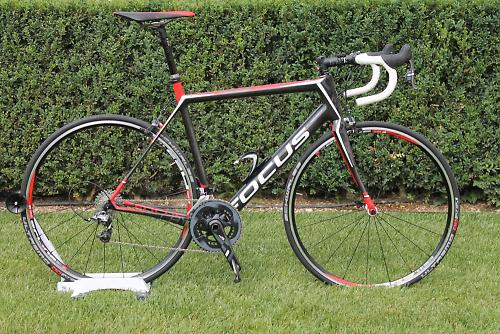
Here’s that news in short:
• Its available for both calliper and disc braking systems.
• Both frame versions are compatible with mechanical and electronic shifting. You can convert from one to the other after swapping a Cable Routing Plate (CRP) on the head tube.
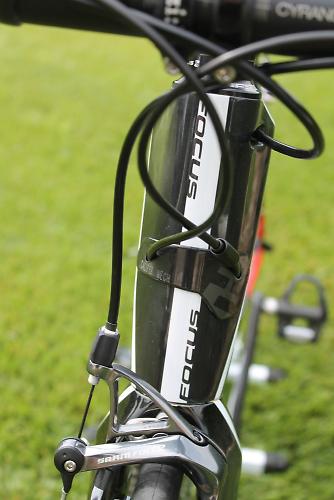
• It’s a lightweight carbon-fibre composite frameset, the calliper brake version with an average frame weight of 860g over its five sizes. The disc brake version has an average frame weight of 880g, the lightest disc brake frame currently available, according to Focus
• The disc brake version uses thru axles – Focus’s fast release and re-engagement Rapid Axle Technology (RAT) system – to ensure the alignment of the disc rotor between the brake pads and thereby minimise noise.
• It will be available in eight different builds, two of them disc brake builds.
• The calliper brake fork weighs 350g while the disc brake version is 380g.
Check back to the original story for more technical information.
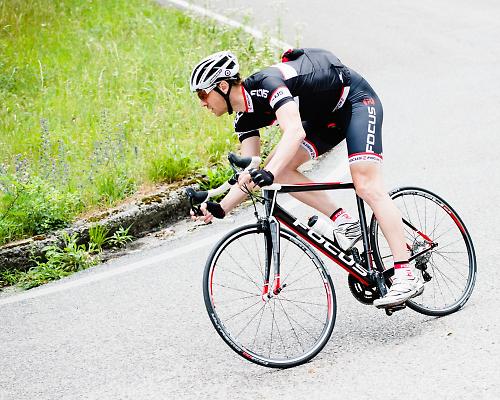
Now we’ve had the chance to ride the calliper version of the bike for ourselves on roads around Verona in northern Italy and here’s what we think...
The Cayo is a quick, well-balanced and comfortable bike.
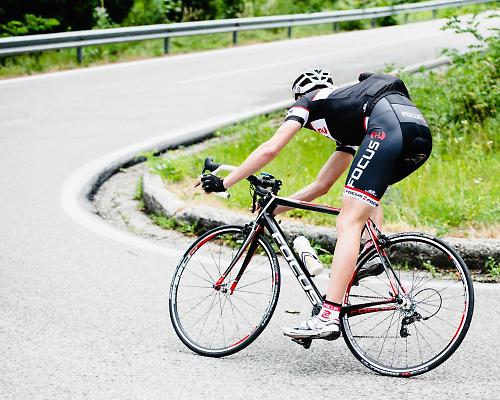
First, the Cayo is lightweight for a mid-level bike. We explained in last week’s article how Focus have achieved this. A frame weight below about 1,000g is seriously light (yes, it’s an arbitrary figure). Below 900g and you’re getting into superlight territory.
As we’ve pointed out a million times, lightness is nothing if the manufacturer has compromised stiffness in achieving it. Focus haven’t done that. The Cayo isn’t the stiffest frame on the planet but it’s a long, long way from flexy.
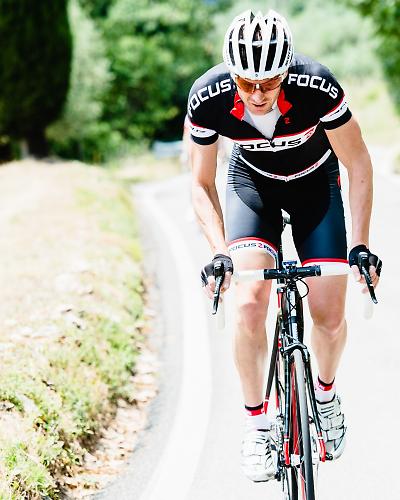
Focus quote a head tube stiffness of 100 Nm/° and a bottom bracket stiffness of 62 N/mm, if you speak that language. If not, those figures mean that the Cayo isn’t extraordinarily stiff in those key areas like a top-end race machine, but it’s still impressively rigid.
Out on the road, I certainly didn’t feel a great amount of flex whether climbing out of the saddle or slamming the bike hard and fast into the corners on the hairpin descents around Verona – and there were quite a few of those.
The Cayo climbs really well. It felt nippy and responsive whenever I wanted to put in a burst coming out of one of the tight corners, and it just got on with the job when it was time to sit in the saddle and grind out the hard yards on the longer climbs.
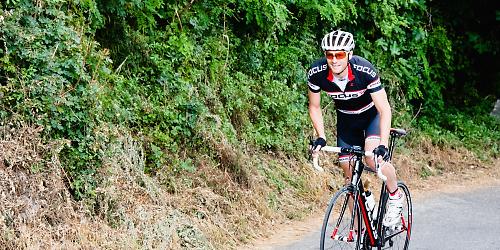
In terms of comfort, the Cayo feels pretty smooth. We had to cope with some – let’s be honest – terrible road surfaces that rival those of the UK in terms of all-round badness, but the Cayo handled them just fine. You still feel the bumps and the holes, of course, but the frame doesn’t leave you with the feeling that you’re in danger of needing surgery if you hit something unexpected. I wouldn’t say that the Cayo is as compliant as something like a Cannondale Synapse, but a certain degree of compliance keeps you sitting pretty over the rough stuff.
The 25mm Schwalbe Ultremo DD tyres doubtless helped on that score, compared to 23s. That’s hardly worth remarking on these days because 25s have pretty much become the norm over the past couple of years.
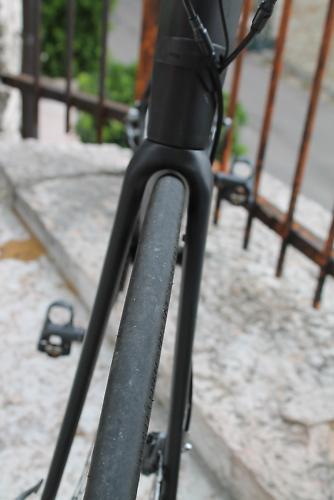
One of the bikes on our test ride was fitted with 28c tyres, although I didn’t get the chance to ride that one. There’s loads of clearance at the back to go even larger but things look tight between the fork legs. You might just about get a 30mm tyre in there if you want to go bigger still. The Cayo doesn’t come with mudguard eyelets, by the way, so if you want ’guards you’re going to have to fit some mounts. That’s a bit of a shame for the UK market, although we’re not typical in that respect. Still, lots of manufacturers are including eyelets on bikes of this type.
The other factor affecting comfort is the geometry. The Cayo’s ride position is slightly more relaxed than that of the Izalco Max, Focus’s full-on road race bike, but they’re not chalk and cheese. The Cayo doesn’t shout ‘sportive geometry’.
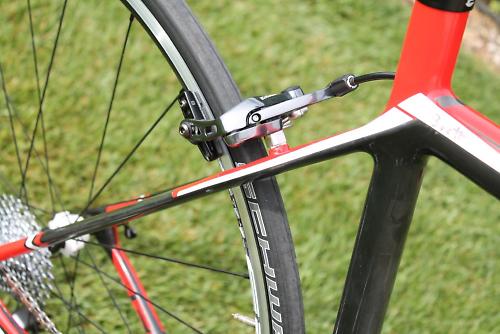
I was riding the 57cm (large) Cayo with a 165mm head tube, a stack (vertical distance between the centre of the bottom bracket and the top of the head tube) of 564.5mm and a reach (horizontal distance between the centre of the bottom bracket and the top of the head tube) of 400mm. That’s a stack: reach ratio of about 1.4: 1, and that’s pretty much consistent across the range of sizes.
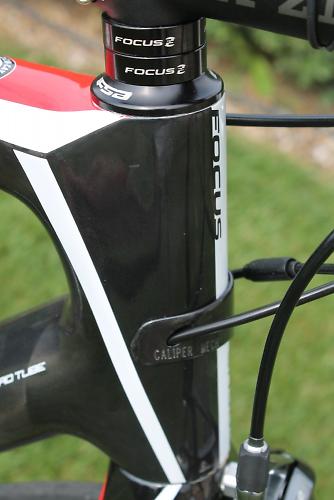
The 56cm version of the Specialized Roubaix SL4, for comparison, has a stack: reach ratio of over 1.5: 1. In other words, the Roubaix offers a considerably more upright ride than the Cayo. The Cayo still feels road-bike aggressive, just not quite as aggressive as the Izalco Max.
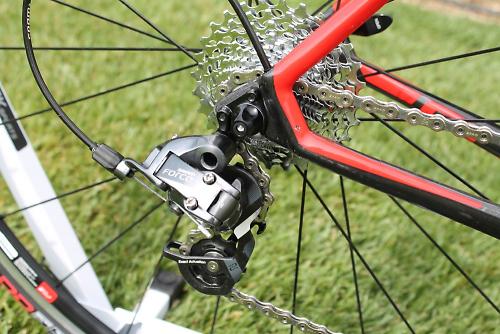
My Cayo was fitted with a SRAM Force 22 groupset, a Fizik Cyrano bar and stem, and DT Swiss Spline wheels. The closest standard build to this is the Cayo 4.0 which will come with a SRAM Force 22 group and new Fulcrum WH-CEX 6.5 wheels. The price has yet to be confirmed but it’s likely to be £2,099.
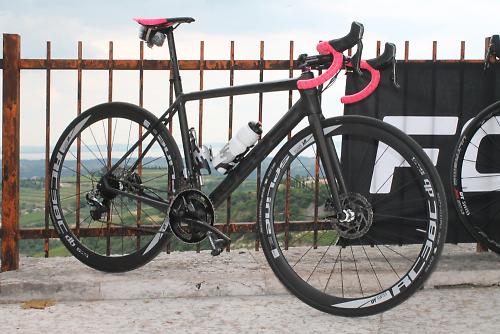
The top level bike in the range is the Cayo 1.0 with a Dura-Ace groupset and DT Swiss R20 Dicut wheels. It is likely to be £2,999. The Cayo 3.0 Disc, with an Ultegra group including disc brakes and DT Swiss R24 Spline wheels will be around £2,399.
I had just three hours aboard the new Cayo but that was long enough to tell that I like it a lot. This is a bike I could easily imagine riding day in, day out, for getting in the big miles at the weekend and for tackling sportives.
Mat has been in cycling media since 1996, on titles including BikeRadar, Total Bike, Total Mountain Bike, What Mountain Bike and Mountain Biking UK, and he has been editor of 220 Triathlon and Cycling Plus. Mat has been road.cc technical editor for over a decade, testing bikes, fettling the latest kit, and trying out the most up-to-the-minute clothing. He has won his category in Ironman UK 70.3 and finished on the podium in both marathons he has run. Mat is a Cambridge graduate who did a post-grad in magazine journalism, and he is a winner of the Cycling Media Award for Specialist Online Writer. Now over 50, he's riding road and gravel bikes most days for fun and fitness rather than training for competitions.
Latest Comments
- Bigtwin 17 min 41 sec ago
That brake stuff is absolutetly jaw-dropping. It's brakes 101 - put a cable end on!
- OnTheRopes 30 min 41 sec ago
and what of BMCR and TLI road races, many members also race those?
- bobbinogs 32 min 2 sec ago
I think you could easily argue that 90% of vehicles on the road are unnecessarily sized and add a considerable risk of injury (to others) in the...
- headingley 1 hour 16 min ago
Cameras (front & rear) are the only way to (try and) sort this kind of behaviour. I've run front and rear camers on my commute for several...
- SimoninSpalding 1 hour 30 min ago
I have Cors N:ext on my summer bike, mainly because they do a 24mm, 25 is REALLY tight on rear brake clearance. I am not impressed with how the...
- Tom_77 2 hours 25 min ago
Typically you will signs like this one.
- chrisonabike 2 hours 31 min ago
However, the highway code revisions now provide more detail and the cyclist overtaking picture has been updated. e.g.:...
- eburtthebike 3 hours 19 min ago
And they were right. It says something about our society that people are prepared to put so much money and effort into opposing something as...
- stonojnr 4 hours 22 min ago
Could make a crass joke about how youre only supposed to flip pancakes today, but i wont...
- Mr Anderson 4 hours 57 min ago
I wouldn't worry too much about the locks being picked, in nearly all cases of bike theft, those Ninja moped gangs, the only things they can pick...




























Add new comment
4 comments
I have bought Cayo with electric groupset but when I want to change it to mechanical group,by replace the new CRP, or Cable Routing Plate but nowhere I can find they sell it. I have sent few email to Focus but no any response. Good bike but poor service. if anybody know please let me know where I can buy CRP for mechanical groupset. Thank you.
Speak to a Focus dealer. Swift Cycles in London are very helpful, I'd give them a call.
I have one of the original generations of Cayo, bought in 2007, and whilst it recently became my winter bike it is still going strong. Full carbon, Ultegra and Mavic Aksium Race hoops for £950 at the time I bought it - stupendous value! Has carried me safely over the Galibier, Stelvio, Tourmalet and various other epics and not missed a beat in all that time. Great bikes.
The top spec model is a lot of bike for 3k. Thats bordering on Canyon level value, and at least you can still buy it in a proper bike shop.